Lamb’s Bread (aka Lamb’s Breath)
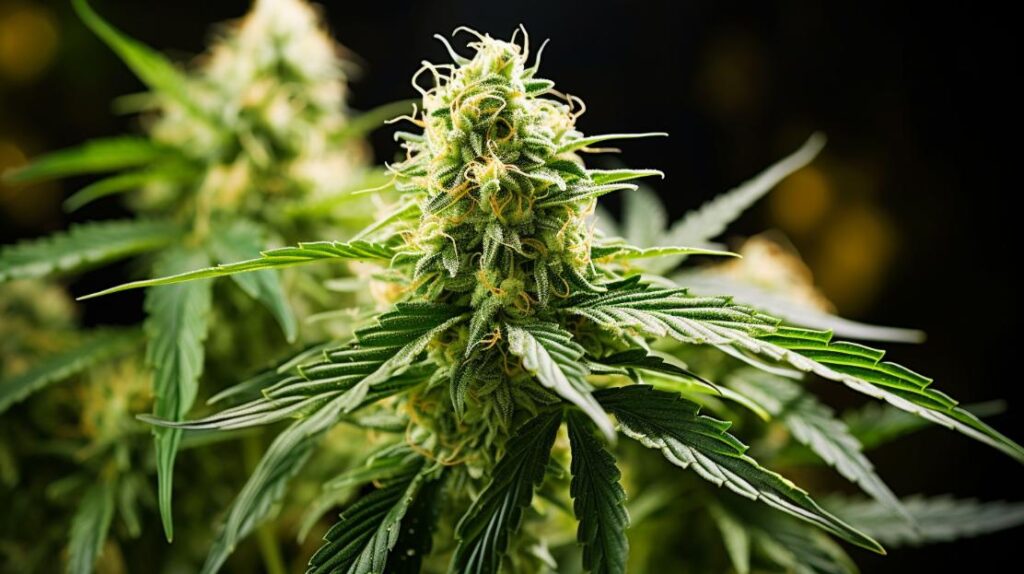
The Lamb’s Bread strain, a venerable Sativa originating from the fertile landscapes of Jamaica, has long been enveloped in a rich tapestry of cultural and historical significance, not least because of its reputed favor with the legendary Bob Marley.
Characterized by its distinctive pungent aroma, reminiscent of cheese with a hint of sweet spice, this strain boasts a robust THC content that elevates it above many of its contemporaries in terms of potency. Its effects, primarily uplifting and energizing, have rendered it a staple among those seeking enhanced creativity or a natural alleviation from the grips of stress, anxiety, and depression.
However, the narrative of Lamb’s Bread extends beyond its immediate sensory and psychological impacts. The strain’s genetic lineage, intricate terpene profile, and its nuanced balance of medical benefits against potential adverse effects paint a complex picture that merits further exploration.
As we examine the broader implications of Lamb’s Bread within both historical and contemporary contexts, including its medical applications and the ongoing research that seeks to unravel its full potential, we invite you to consider not just the strain itself, but its place within the wider discourse on cannabis and its multifaceted role in society.
Genetic Lineage
Lamb’s Bread’s genetic origin, a pure Jamaican Sativa, showcases a rich lineage that underscores its sativa-dominant characteristics and its historical significance within the Rastafarian culture. This phenotype, also known as Lamb’s Breath, embodies a robust genetic profile conducive to producing energizing and uplifting effects. The strain’s reputation, bolstered by its purported preference among legendary icons such as Bob Marley and Peter Tosh, underscores its cultural and spiritual importance.
Its sativa dominance is evident in its growth patterns, displaying a symmetrical branching structure with generous internodal spacing, a trait that optimizes its cultivation in the warm, tropical climates akin to its Jamaican roots.
Analyzing Lamb’s Bread’s botanical features reveals a plant adept at thriving in outdoor environments, a testament to its resilient genetic makeup. The strain’s favorable characteristics are not solely limited to its growth and cultural legacy; its unique aromatic profile, marked by a distinctive cheesy aroma, adds to its allure, distinguishing it from other cannabis strains.
This combination of uplifting effects, historical reverence, and unique sensory attributes solidifies Lamb’s Bread’s esteemed position within the cannabis community, reflecting a lineage that is as rich in history as it is in genetic diversity.
THC/CBD Content
Building on its distinguished genetic lineage, the THC and CBD content of Lamb’s Bread further delineates its unique position within the cannabis community. Lamb’s Bread strain, also known as Lamb’s Breath, is a sativa-dominant variety that boasts a THC content ranging from 16% to 21%, positioning it as a potent option for cannabis connoisseurs. Its very low CBD content, essentially at 0%, underscores its primary use for psychoactive rather than therapeutic effects.
This distinct cannabinoid profile contributes to Lamb’s Bread’s reputation for delivering an uplifting rush of energy and creativity, making it particularly suitable for morning or daytime use.
To engage the audience with technical details:
-
THC Content: Lamb’s Bread strain features a THC percentage that fluctuates between 16% and 21%, categorizing it as a potent strain capable of delivering significant psychoactive effects.
-
CBD Content: With a negligible CBD content, Lamb’s Bread emphasizes its psychoactive properties over potential therapeutic benefits, aligning with users seeking potent cerebral experiences.
-
Optimal Use: Given its sativa dominance and uplifting effects, Lamb’s Bread is recommended for morning or daytime use, potentially aiding in alleviating symptoms of depression, stress, and anxiety.
Professionals and enthusiasts seeking PRODUCTS NEAR that offer Lamb’s Bread strain can anticipate an experience that combines potency with the promise of enhanced mood and creativity.
Terpene Profile
Delving into the terpene profile of the Lamb’s Bread strain, also known as Lamb’s Breath, reveals its significant role in defining the strain’s aromatic essence, flavor notes, and therapeutic potential.
Terpenes, aromatic compounds found in cannabis and various other plants, are pivotal in crafting the unique sensory experiences associated with different strains. In the case of Lamb’s Bread, the dominance of Caryophyllene is particularly noteworthy. This terpene is celebrated for its spicy and peppery notes, which contribute to the strain’s distinctive aroma and flavor profile.
Caryophyllene’s influence extends beyond olfactory pleasure, as it is known for potential therapeutic benefits including anti-inflammatory and anxiolytic effects. This aligns with the broader understanding of terpenes contributing to the entourage effect – a synergistic interaction that enhances the overall efficacy of cannabis compounds.
Given the variability in terpene profiles, Lamb’s Bread offers a personalized experience, with its Caryophyllene-rich composition appealing to users seeking specific sensory and therapeutic outcomes.
Effects
Exploring beyond the terpene profile, the Lamb’s Bread strain distinguishes itself through its pronounced effects on both mind and body, offering an energetic and uplifting experience to users. Renowned for its higher THC potency, Lamb’s Bread is a compelling choice for those seeking an impactful cannabis encounter. This strain is particularly noted for its capacity to elevate mood, enhance creativity, and provide a significant boost in productivity. Users report a harmonious blend of mental clarity and physical vitality, making it an ideal selection for activities requiring both intellectual and physical engagement.
The effects of Lamb’s Bread are multifaceted, providing:
- A productivity boost, aiding users in tackling their daily tasks with increased energy and focus.
- Mood enhancement, offering a positive uplift that is beneficial for those dealing with stress, anxiety, or depression.
- Creative inspiration, unlocking new perspectives and ideas, thereby fostering an environment conducive to innovation and artistic exploration.
However, potential users should be mindful of common side effects such as dry mouth and dry eyes. These minor inconveniences are easily managed and do not detract from the overall beneficial impact of the Lamb’s Bread strain on enhancing mental and physical wellbeing.
Medical Uses
Lamb’s Bread strain, known for its high THC content, emerges as a prominent candidate in the medical cannabis community due to its significant stress-relieving, anti-anxiety, and antidepressant properties. This strain offers a unique blend of calming and energizing effects, making it highly suitable for medical use. The higher-than-average THC potency plays a crucial role in enhancing its medicinal benefits, addressing a spectrum of mental health conditions effectively.
| Benefit | Research Findings | Dosage Recommendations |
|---|---|---|
| Stress Relief | Highly effective in reducing cortisol levels. | Moderate doses for management. |
| Anxiety Alleviation | Shows promise in acute anxiety cases. | Tailored to individual tolerance. |
| Depression Combat | Positive impact on mood and motivation. | Gradual increase suggested. |
| Calming Effects | Induces a state of mental relaxation. | Low to moderate doses. |
| Energizing Effects | Enhances focus and creativity without overstimulation. | Careful balance with THC content. |
Patient testimonials further substantiate the strain’s efficacy, highlighting its role in improving quality of life. However, dosage recommendations emphasize a personalized approach, taking into account individual tolerance and medical history, to maximize therapeutic outcomes while minimizing potential side effects.
Flavor and Aroma
Transitioning to the sensory profile of Lamb’s Bread, its flavor and aroma are characterized by a complex interplay of earthy and spicy notes, underscored by a subtle hint of pine. This rich bouquet offers a nuanced experience that is both invigorating and soothing, making it a favorite among connoisseurs and casual users alike.
The strain’s distinctive aromatic profile not only contributes to its therapeutic effects but also opens up a range of culinary uses, pairing recommendations, and storage tips to maintain its integrity.
-
Culinary Uses: Lamb’s Bread can be incorporated into a variety of recipes where its unique flavor complements both sweet and savory dishes. Its spicy undertones pair well with ingredients like ginger and cinnamon, while its earthy aspects enhance the flavors of root vegetables and hearty meats.
-
Pairing Recommendations: For those looking to elevate their dining experience, pairing Lamb’s Bread with complementary flavors can create a harmonious balance. A glass of bold red wine or a dark, rich coffee can accentuate its complex profile.
-
Storage Tips: To preserve the strain’s potent aroma and flavor, it should be stored in an airtight container away from direct sunlight and extreme temperatures, which can degrade its quality over time.
Appearance
Upon examination, Lamb’s Bread’s visual appeal is immediately apparent through its resinous buds, which exhibit a striking golden-green hue complemented by a dense layer of glandular trichomes. The meticulous cultivation techniques employed in growing this strain significantly contribute to its vibrant appearance and robust trichome production. These techniques ensure that each bud is properly cured, maximizing both visual appeal and potency.
The buds themselves are large and golden-green, adorned with amber pistils that add to the visual complexity of the strain. This aesthetic is further enhanced by the presence of red hairs and crystalline trichomes, creating a visually stunning product that is both appealing and indicative of high quality. The dense trichomes not only contribute to the strain’s sticky texture but are also a key factor in its potency and the rich aromatic profile it emits.
Lamb’s Bread’s appearance is a direct reflection of the careful attention to detail in its cultivation, from the selection of genetics to the curing process. This attention to cultivation techniques and trichome production results in a strain that is as visually appealing as it is enjoyable to consume.
Grow Information
Delving into the cultivation specifics, Lamb’s Bread demonstrates a remarkable adaptability to both indoor and outdoor growing environments, characterized by its vigorous growth pattern and precise harvest timelines. This strain’s robust and symmetrical branching structure, coupled with generous internodal spacing, speaks to its genetic lineage, optimized for both yield and potency. The moderate growth difficulty level makes Lamb’s Bread suitable for intermediate gardeners, who can unlock its full potential by leveraging specific growing tips.
-
Outdoor Cultivation: Achieves full maturity by mid-to-late October, showcasing its tall plants and resilience, making the most of natural conditions.
-
Indoor Cultivation: Buds reach peak ripeness in 9-10 weeks following the initiation of a 12/12 light cycle, allowing for higher potency and quality through controlled environmental conditions.
-
Harvest Time and Yield: Ready for harvest around 8 weeks or early October, offering slightly higher than average yields, which enhances its appeal among growers.
The appearance of Lamb’s Bread, with its distinctive buds and leaf structure, further underscores the strain’s unique genetic makeup. Its renowned medical uses, attributed to its high potency and quality, are closely tied to the meticulous cultivation practices outlined above.
Adverse Effects
While the cultivation of Lamb’s Bread offers significant benefits in terms of yield and potency, it is equally important to examine the strain’s potential adverse effects on consumers. A comprehensive understanding of these effects is crucial to ensure informed usage and mitigate potential risks associated with this cannabis strain.
| Adverse Effect | Symptoms | Prevalence |
|---|---|---|
| Dry Mouth | Decreased saliva production | Very Common |
| Increased Anxiety | Heightened worry, discomfort | Common in some users |
| Paranoia | Irrational mistrust or fear | Less Common |
The manifestation of dry mouth, medically known as xerostomia, is a very common side effect attributed to the Lamb’s Bread strain. This condition can lead to discomfort but is generally manageable through increased hydration. Increased anxiety, while not universally experienced, can occur in some individuals, particularly in those with a predisposition to anxiety disorders. This effect requires careful monitoring and potentially adjusting dosage or strain selection. Paranoia, though less prevalent, represents a more severe adverse effect, necessitating a cautious approach, especially for new users or those with a history of mental health issues. Understanding these potential adverse effects is vital for consumers to make informed decisions and minimize risks while utilizing the Lamb’s Bread strain for its therapeutic benefits.
Comparisons with Similar Strains
Exploring the Lamb’s Bread strain in comparison to similar sativa-dominant varieties reveals key differences in THC and CBD content, flavor profiles, growing characteristics, and user experiences.
While Lamb’s Bread is celebrated for its uplifting and energizing effects, akin to other sativas, its unique composition and cultivation requirements set it apart. Variations in THC and CBD levels contribute to its distinct user experiences, offering a balance that is sought after by many enthusiasts. Additionally, its flavor profile, marked by a spicy and herbal essence with a hint of sweetness, distinguishes it from counterparts that might lean more towards citrus or earthy notes.
When comparing Lamb’s Bread to similar strains, several facets stand out:
-
User experiences: Lamb’s Bread often receives acclaim for its ability to enhance creativity and focus, making it a preferred choice for daytime use.
-
Cultivation tips: Unlike some sativas that require specific climates, Lamb’s Bread is relatively adaptable but thrives in environments that mimic its Jamaican origins.
-
Product recommendations: For those looking to explore strains with similar uplifting effects but different flavor profiles or growing requirements, strains such as Green Crack and Sour Diesel may be worthwhile alternatives.
These comparisons underscore Lamb’s Bread’s unique position within the sativa-dominant category, highlighting its appeal to both seasoned and novice cannabis users.
Research and Studies
Building on the understanding of Lamb’s Bread’s unique characteristics and user experiences, it is essential to examine the underlying research and studies that highlight its potential therapeutic benefits.
Research has elucidated that cannabis strains with high THC content, such as Lamb’s Bread, may play a crucial role in mitigating symptoms associated with chronic stress and depression. This aligns with clinical observations of Lamb’s Bread’s energizing effects, which have been reported to combat fatigue and elevate energy levels in affected individuals.
Further, the terpene profile of Lamb’s Bread, particularly its caryophyllene richness, has been studied for its anti-anxiety and stress-relieving properties, presenting a natural alternative for managing these conditions.
Clinical trials are progressively acknowledging Lamb’s Bread’s efficacy in addressing symptoms of ADHD and appetite loss, attributing these benefits to its uplifting and mood-enhancing capabilities.
Moreover, ongoing research delves into its influence on creativity and motivation, suggesting a promising avenue for cognitive enhancement. This body of evidence underscores the potential benefits of Lamb’s Bread, not just in symptom management but also in fostering cognitive and creative faculties, paving the way for more targeted clinical trials and studies.
History and Origin
The Lamb’s Bread strain, deeply rooted in Jamaican culture, represents a significant chapter in the history of cannabis strains, distinguished by its speculated favoritism by Bob Marley and its mysterious genetic lineage. Originating in Jamaica, this sativa-dominant strain carries a mystique partially due to its unclear genetic origins. Its cultural significance is heightened by its association with reggae music and its integral role in Rastafarian rituals, where it is often used as a medium for spiritual connection.
Engaging with the Lamb’s Bread strain offers a glimpse into its:
-
Cultural significance: Embodying the spirit of Jamaica and its people, Lamb’s Bread is more than a cannabis strain; it’s a symbol of freedom and resistance.
-
Influence on music: The strain’s speculated association with Bob Marley, a global music icon, underlines its influence on reggae music and beyond, serving as a source of inspiration and relaxation for artists.
-
Role in Rastafarian rituals: Lamb’s Bread is not just preferred by Rastafarians for its effects; it also plays a vital role in their spiritual practices, facilitating meditation and reflection.
This strain’s history is intertwined with the cultural fabric of Jamaica, making it a subject of fascination and respect within the cannabis community.
Frequently Asked Questions
Is Lamb’s Bread Sativa or Indica?
Lamb’s Bread is a sativa strain, characterized by its genetic origin rooted in Jamaican Sativa. Cultivation tips highlight its resilience and rapid growth. Its flavor profile is marked by a unique sweet and spicy taste.
What Are the Effects of Lambsbread Strain?
The effects include enhanced mental clarity, a notable creative boost, and significant stress relief. These outcomes are attributed to its specific chemical profile, which interacts with the body’s endocannabinoid system to induce these responses.
What Was Bob Marley’s Favourite Strain?
Bob Marley, profoundly influenced by his Jamaican origins, favored a particular cannabis strain with a rich history. This preference underscores the cultural and personal significance of the strain within Marley’s life and musical inspiration.
What Is the Best Strain to Get You High?
Determining the best strain for achieving a high involves analyzing THC content comparison, strain cultivation methods, and cannabis legality concerns. High THC strains typically offer potent effects, but user preference and legality significantly influence the ideal choice.

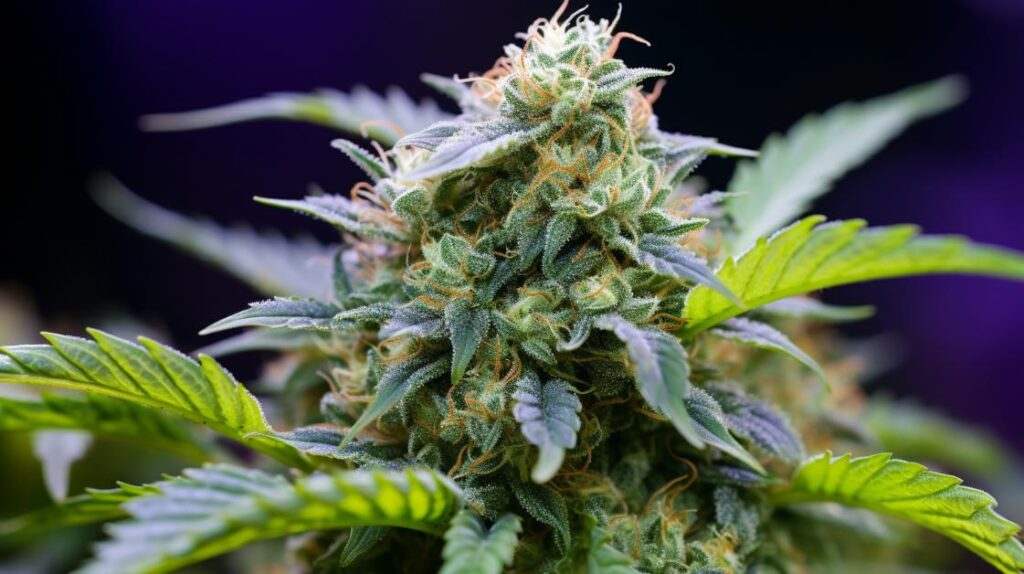
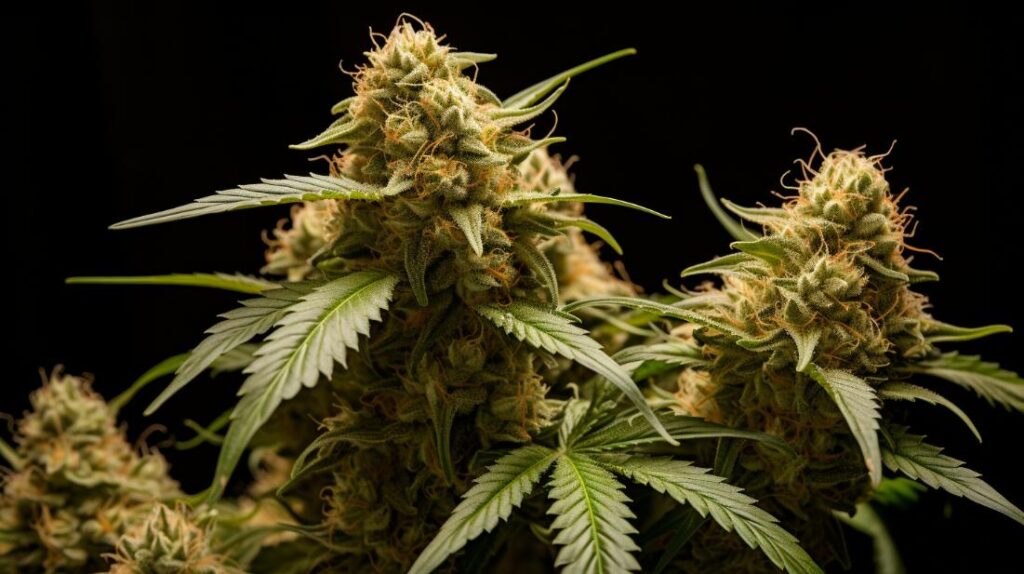
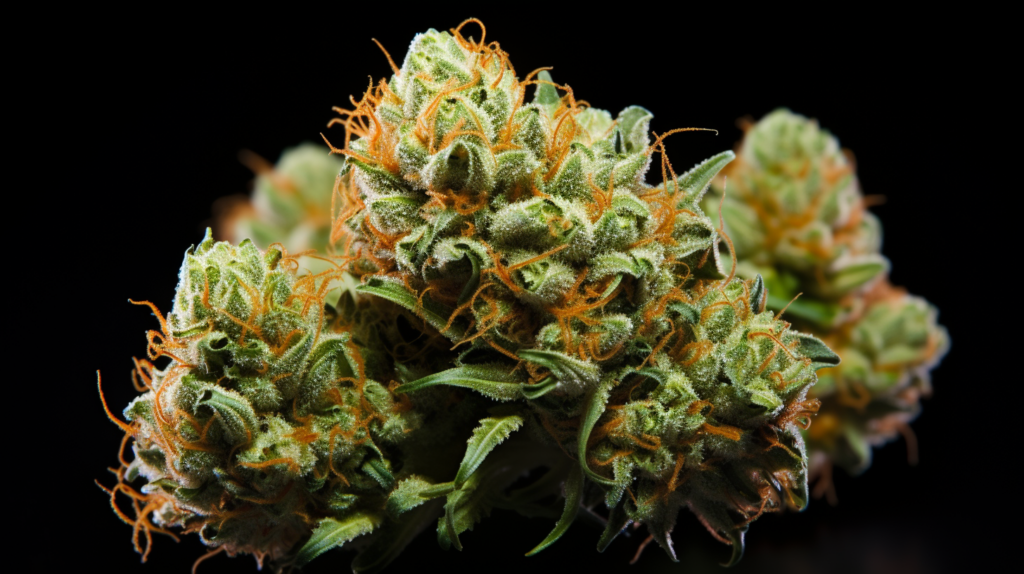
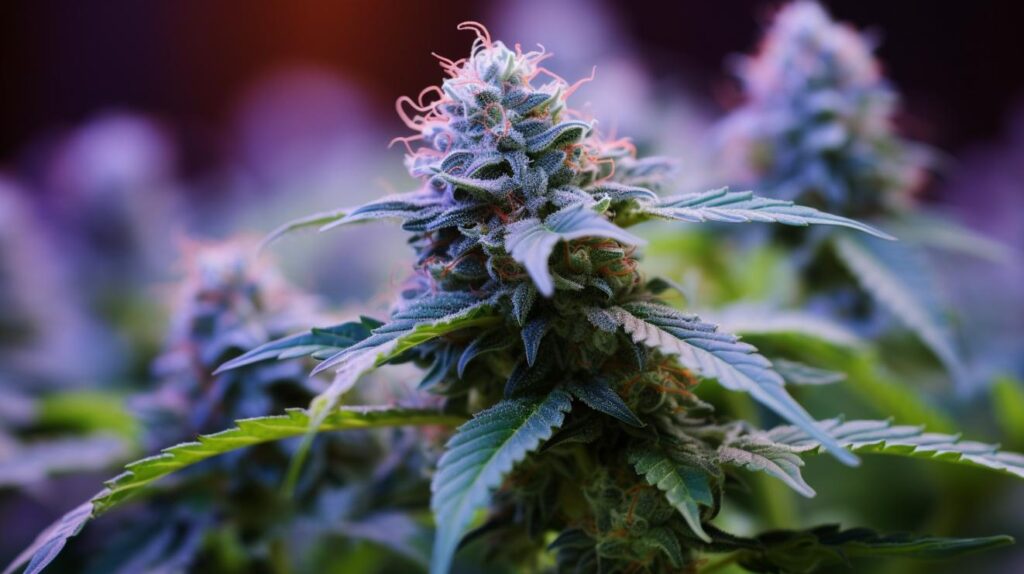
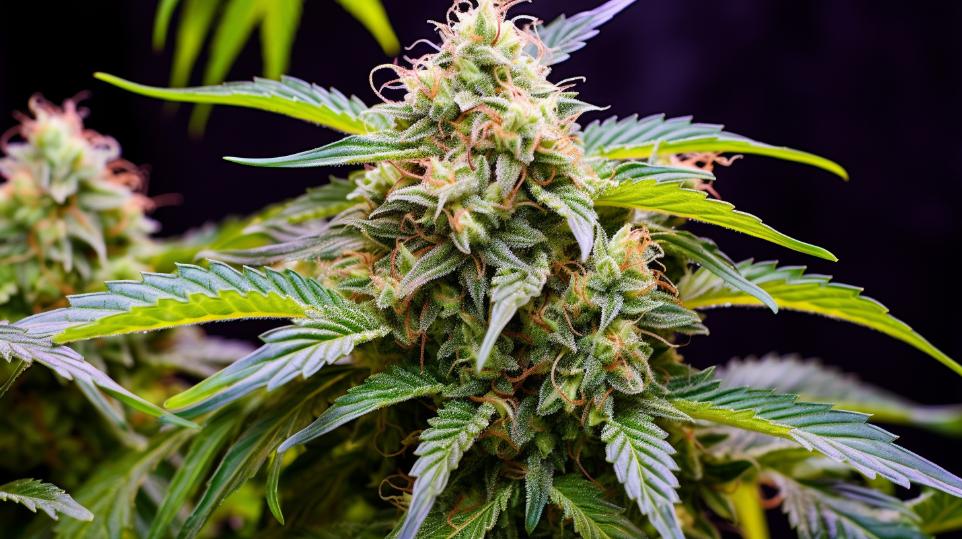

Responses